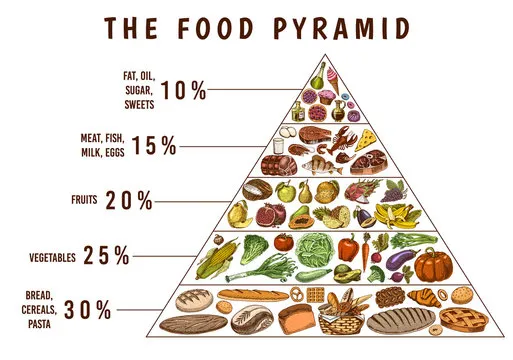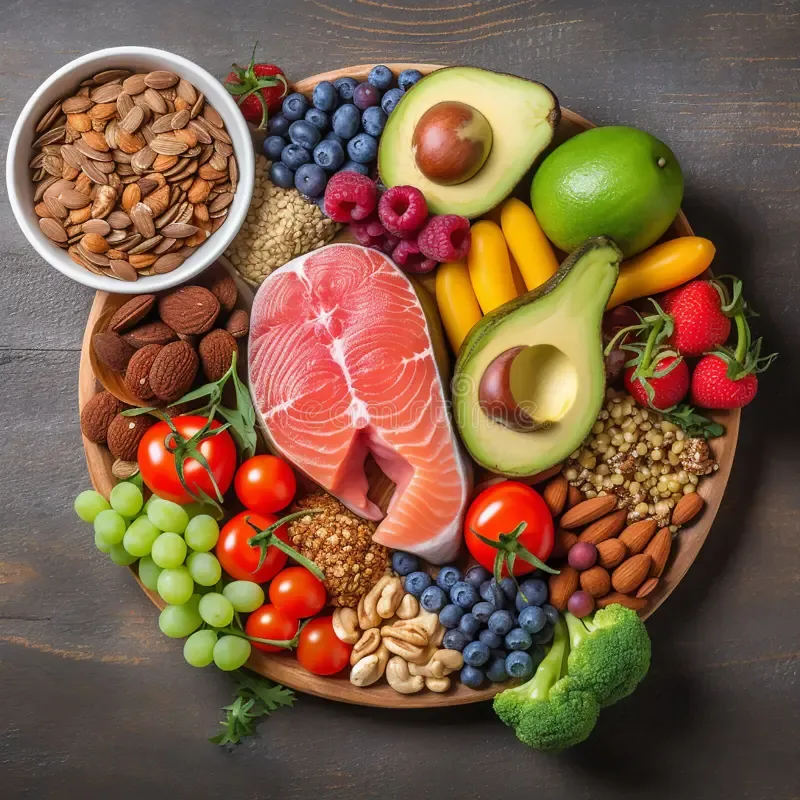Adopting healthy eating habits is a crucial step towards improving your overall health and well-being. It involves making conscious choices about what you eat, how much you eat, and when you eat.
In this short text that I put together, will explore the practical strategies for developing and maintaining healthy eating habits that you can integrate into your daily life.
As someone who’s been on this journey (and trust me, it’s been a rollercoaster!), I’ve learned a thing or two about creating sustainable, healthy eating habits. It’s not about restrictive diets or counting every calorie - it’s about making small, consistent changes that add up to big results.
So, let’s dive in and explore how you can develop healthy eating habits that stick!
The General Basics of Healthy Eating

Before we dive into specific habits, let’s get a handle on what healthy eating actually means. It’s not about eliminating entire food groups or never indulging in your favorite treats. Instead, it’s about balance, variety, and moderation.
Here are the key components.
1. Fruits and Vegetables
Aim to fill half your plate with fruits and veggies. They’re packed with vitamins, minerals, and fiber, and they add color and flavor to your meals. Plus, they’re relatively low in calories, so you can eat a lot of them without worrying about overdoing it.

2. Whole Grains
Choose whole grains over refined grains whenever possible. Think brown rice instead of white, whole wheat bread instead of white bread. Whole grains provide more nutrients and fiber, which keeps you feeling full longer.
3. Lean Proteins
Include a variety of protein sources in your diet. This could be lean meats, fish, eggs, legumes, or plant-based proteins like tofu. Protein is essential for building and repairing tissues and can help you feel satisfied after meals.
4. Healthy Fats
Not all fats are created equal. Focus on healthy fats from sources like avocados, nuts, seeds, and olive oil. These fats are important for brain health and can actually help you absorb certain vitamins.
5. Dairy or Dairy Alternatives
If you consume dairy, opt for low-fat options. If you’re dairy-free, choose fortified alternatives to ensure you’re getting enough calcium and vitamin D.
6. Limit Processed Foods and Added Sugars
This doesn’t mean you can never have a cookie again. It just means that the majority of your diet should come from whole, minimally processed foods.

7. Stay Hydrated
Water is crucial for every system in your body. Aim to drink water throughout the day and limit sugary drinks.
The Steps Needed to Built Healthy Eating Habit
Now that we’ve covered the basics, let’s get into the nitty-gritty of how to actually develop these healthy eating habits. Remember, change doesn’t happen overnight. It’s about making small, consistent changes that add up over time.
1. Start with Mindful Eating

Mindful eating is all about paying attention to your food and your body’s signals.
| Healthy Eating Habits | |
|---|---|
| Eat without distractions | Turn off the TV, put away your phone, and focus on your meal. |
| Chew slowly | Take the time to really taste and enjoy your food. |
| Listen to your body | Eat when you’re hungry and stop when you’re full. |
| Appreciate your food | Think about where it came from and how it nourishes your body. |
When I first started practicing mindful eating, I was amazed at how much more satisfying my meals became. I found I was eating less overall because I was more tuned into my body’s signals.
2. Plan Your Meals
Meal planning can be a game-changer when it comes to healthy eating. It helps you avoid the “what’s for dinner” panic that often leads to unhealthy choices.
| Healthy Meal Planning Tips | |
|---|---|
| Set aside time each week to plan your meals. | |
| Make a grocery list based on your meal plan. | |
| Prep ingredients in advance when possible. | |
| Keep healthy snacks on hand for when hunger strikes. |
I used to think meal planning was too time-consuming, but I’ve found that it actually saves me time and stress throughout the week.
3. Cook More Meals at Home
Cooking at home gives you control over what goes into your food. Plus, it’s often healthier and more cost-effective than eating out.
| Healthy Cooking Tips | |
|---|---|
| Learn a few basic cooking techniques. | |
| Start with simple recipes and gradually challenge yourself. | |
| Make extra and use leftovers for lunch or freeze for later. | |
| Get creative with herbs and spices to add flavor without extra calories. |
Don’t worry if you’re not a master chef. I started with really basic recipes and gradually built up my skills. Now, I actually look forward to trying new recipes in the kitchen!
4. Practice Portion Control
Portion sizes have grown significantly over the years, leading many of us to eat more than we need.
| Healthy Eating Portion Tips | |
|---|---|
| Use smaller plates to make portions look larger. | |
| Fill half your plate with vegetables. | |
| Use your hand as a guide: a serving of protein should be about the size of your palm, a serving of carbs about the size of your cupped hand. | |
| Listen to your body’s fullness cues and stop eating when you’re satisfied, not stuffed. |
Learning to control portions was a game-changer for me. I realized I could still enjoy all foods in moderation.
5. Make Healthy Swaps
Small swaps can make a big difference over time.
| Healthy Food Swaps | |
|---|---|
| Choose whole grain bread instead of white. | |
| Snack on fruits or nuts instead of chips. | |
| Use Greek yogurt instead of sour cream in recipes. | |
| Drink sparkling water with a splash of juice instead of soda. |
I found that making these swaps gradually made them feel less like a sacrifice and more like a natural choice.
6. Stay Hydrated
Drinking enough water is crucial for overall health and can even help with weight management.
| Hydration Tips | |
|---|---|
| Carry a reusable water bottle with you. | |
| Set reminders to drink water throughout the day. | |
| Flavor your water with fruit or herbs if you find plain water boring. | |
| Eat water-rich foods like cucumbers, watermelon, and zucchini. |
I used to struggle with drinking enough water, but making it a habit has made a big difference in how I feel throughout the day.
7. Practice the 80/20 Rule
Healthy eating doesn’t mean never indulging.
| Healthy Eating Mindset | |
|---|---|
| Focus on nutrient-dense foods most of the time. | |
| Allow yourself to enjoy treats without guilt. | |
| Remember that one unhealthy meal doesn’t ruin your overall healthy eating pattern. |
Adopting this mindset was liberating for me. It took away the stress of trying to eat perfectly all the time and made healthy eating feel much more manageable.
Conclusion
Developing healthy eating habits is a journey, not a destination.
It’s about making small, consistent changes that add up to big results over time. Every healthy choice you make is a step in the right direction.
Start small, be patient with yourself, and keep experimenting until you find what works for you. Before you know it, these healthy eating habits will become second nature, and you’ll be feeling better than ever!
Stay up to date
Get notified when I publish something new, and unsubscribe at any time.